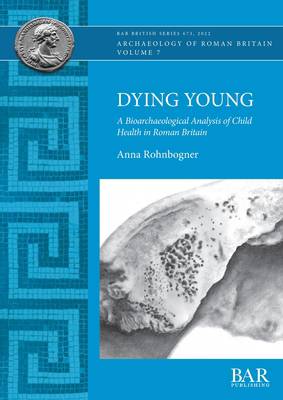
- Afhalen na 1 uur in een winkel met voorraad
- Gratis thuislevering in België vanaf € 30
- Ruim aanbod met 7 miljoen producten
- Afhalen na 1 uur in een winkel met voorraad
- Gratis thuislevering in België vanaf € 30
- Ruim aanbod met 7 miljoen producten
Omschrijving
Dying Young explores childhood morbidity and mortality during the 1st to 5th century AD. The detailed osteological analysis of 953 non-adult (0 - 17 years) skeletons from 15 sites paints a rich picture of the lived realities of Romano-British children in towns and settlements of the countryside. Health and disease are examined under the themes of infant mortality, growth, diet, working lives, infection, access to resources and exploitation. Skeletal evidence indicates higher status of the urban population, which is in stark contrast to nutritional stress and a tough living environment in the countryside. The data suggests exploitation of the rural indigenous population, as well as rural-to-urban migration of adolescents, potentially in the search of work. Patterns in Romano-British childhood health are considered in context by comparison with similar studies for Iron Age and post-medieval periods. This volume highlights the importance of skeletons, particularly those of non-adults, as a multi-faceted resource for understanding the forgotten and marginalised people of Roman Britain.
Specificaties
Betrokkenen
- Auteur(s):
- Uitgeverij:
Inhoud
- Aantal bladzijden:
- 176
- Taal:
- Engels
- Reeks:
- Reeksnummer:
- nr. 673
Eigenschappen
- Productcode (EAN):
- 9781407359595
- Verschijningsdatum:
- 30/06/2022
- Uitvoering:
- Paperback
- Formaat:
- Trade paperback (VS)
- Afmetingen:
- 210 mm x 297 mm
- Gewicht:
- 580 g

Alleen bij Standaard Boekhandel
Beoordelingen
We publiceren alleen reviews die voldoen aan de voorwaarden voor reviews. Bekijk onze voorwaarden voor reviews.











